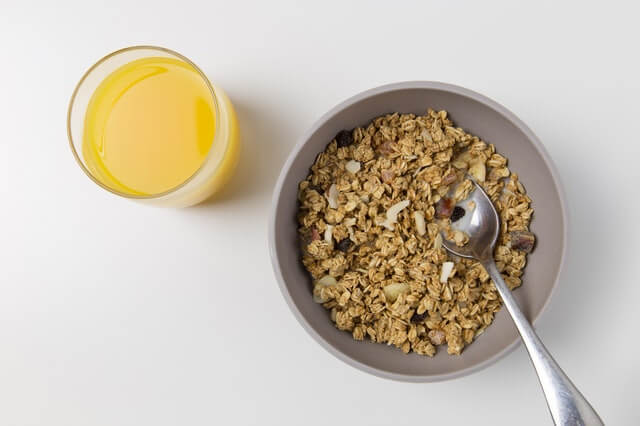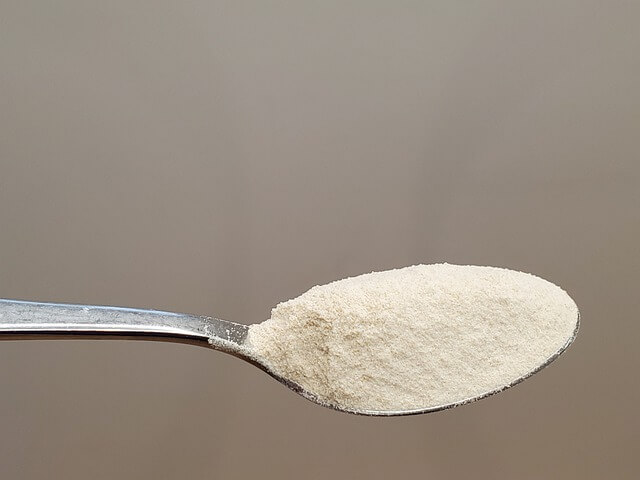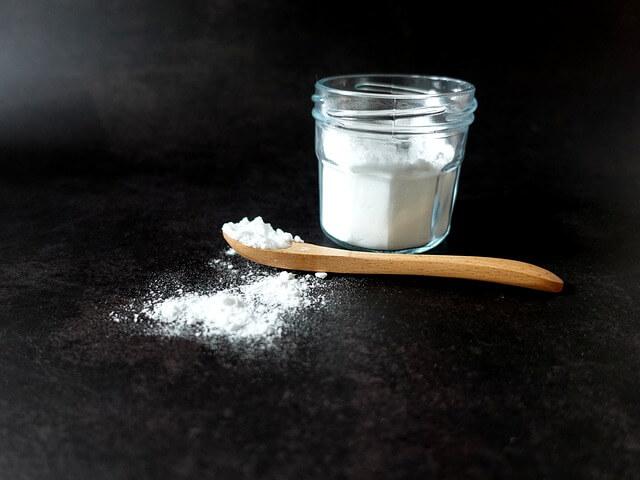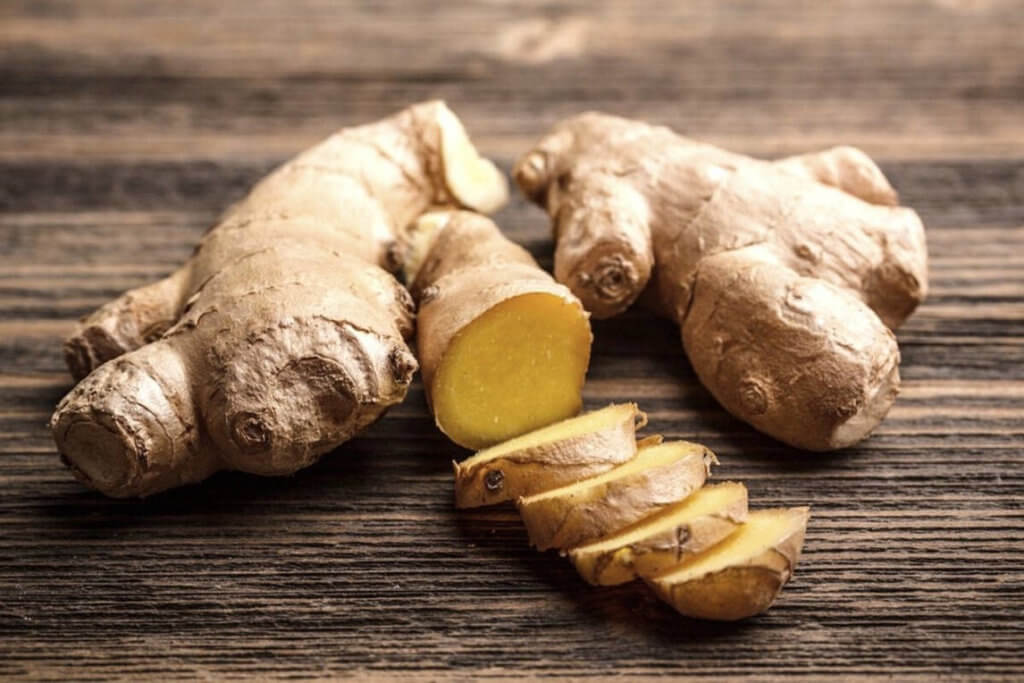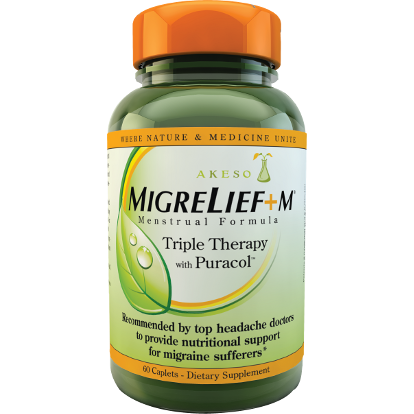5 Tips to Strengthen Your Immune System Naturally
A well-balanced, strong immune system is key to preventing infection, disease, or disease complications. But is it really possible to strengthen the immune system?
Cold and flu season is reason enough to start thinking of your immune system and how to protect yourself against diseases and infections. The stakes are higher this year, though – as the coronavirus pandemic continues to spread all across the United States, people are looking for ways to boost their immune systems and keep their bodies’ defenses as healthy as possible.
But is boosting the immune system really possible? Experts say the answer is complicated. A common misconception surrounding the immune system is that people must ‘boost’ or ‘strengthen’ it to ward off disease. However, an excessively strong immune system can be just as problematic as a weak one. An overactive immune system that continually produces too much of an immune response can encourage the body to attack itself.
Instead, we should strive for a more balanced immune system, one that can identify and attack harmful microorganisms without turning against its own cells and tissues. To do so, it’s important to understand that the immune system is a complex and dynamic network of organs, tissues, and cells that work closely together to defend the body against harmful pathogens.
Certain diet and lifestyle changes – along with key vitamins, minerals, and herbs – are known to positively impact the body’s natural defense mechanism and influence your immune response.
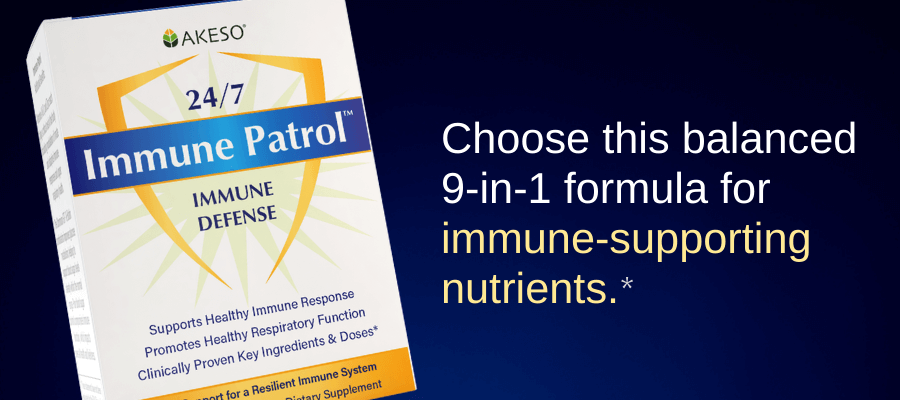
5 Tips:
1. Don’t Smoke (avoid second-hand smoke too!)
Each year, more than 480,000 people in the United States die from tobacco-related illnesses. That means that smoking kills more than car accidents, guns, illegal drugs, and alcohol combined. Smoking cigarettes is also associated with many diseases and leads to acute changes in the immune system.
Numerous chemical compounds found in cigarettes are proven proinflammatory and immunosuppressive agents, meaning that they can trigger inflammatory responses and lower the body’s ability to mount an immune response, respectively. In fact, studies have shown that people who smoke are twice as likely to contract a respiratory tract infection, such as the flu or COVID-19. Smoking also seems to reduce the flu vaccine’s effectiveness among older adults.
Avoid second-hand smoke too. Secondhand smoke is thought to expose people to about one percent of the smoke that active smokers inhale. According to researchers, “undiluted side-stream smoke contains many harmful chemicals and in greater concentration than cigarette smoke inhaled through a filter.”
Fortunately, much of the damage from smoking is reversible. Up to 79% of cigarette’s harmful effects and changes and genetic modifications can be reversed after a person quits smoking, according to a 2007 study published in the peer-reviewed journal Genome Biology.
2. Get Enough Sleep
Several studies have looked at the relationship between sleep and immunity and found that the two might be more connected than initially thought. Research shows that people who don’t get enough sleep or are sleep deprived are more likely to catch a cold or get sick after being exposed to a virus. It can also affect how long it takes you to get better and how often you get sick.
A study led by sleep investigators at UC San Francisco reported that people who sleep six hours or less were four times more likely to get sick when exposed to the common cold virus, compared to those who slept seven or more hours per night. Another study conducted in Germany found that sleep is vital for regulating T cells, a type of white blood cell essential for immune function.
Immune chemicals may also be closely intertwined with your nightly slumber. When you are asleep, your immune system gets busy secreting proteins called cytokines. Cytokine is the general term for a cluster of chemicals that carry out several important jobs, like aiding cellular communication during immune responses and mediating and regulating inflammation.
The immune system raises specific cytokines in response to infections, stress, inflammation, and trauma. But if you don’t get enough sleep, your immune system doesn’t get the chance to produce these cytokines, potentially leaving you more vulnerable to harmful pathogens and with a weak immune system. All in all, sleeping more and better is one of the best forms of daily immune support.
3. Limit Added Sugars
Eating high doses of processed sugars can temporarily “deactivate” or suppress the immune system, increasing the risk for infectious diseases. Although research is being conducted on how added sugars affect the body, we know that sugar seems to affect how white blood (immunity) cells fight harmful pathogens such as viruses and bacteria.
The most common sources of processed and added sugars are candy, bakery items, soda, etc. But it also hides in many savory foods such as bread, salad dressings, yogurt, breakfast cereals, and more. These are a few of the (many) names sugar may show up as in food labels:
- Corn syrup
- High-fructose corn syrup
- Maltose/malt sugar
- Sucrose
- Fructose
- Invert sugar
- Agave nectar
- Dextrose
- Lactose
- Cane sugar/cane crystals
- Honey
- Brown sugar/molasses
- Evaporated cane juice
4. Manage Stress
Stress produces hormonal changes that decrease the body’s ability to fight colds and other infections. When you are under stress, the body releases cortisol, also known as the “fight-or-flight” hormone.
In appropriate quantities, cortisol can boost the immune system by limiting inflammation. However, chronic stress, or a prolonged cortisol secretion, may drive the immune system to become “resistant.” As a result, the body may need to release more cortisol, causing a disproportionate inflammatory response.
5. Fill Nutritional Gaps
One of the best ways you have to make sure your immune system and its components are functioning is to maintain a healthy diet. Your immune system (just like the rest of your body) runs on the nutrients you get from your food and other sources like nutritional supplements.
The foods you eat have direct consequences (both positive and negative) on how your immune system responds. Each time you eat, the body is flooded with substances that either increase or degrade the immune response. By removing foods that deplete immune system resources (e.g., sugar, alcohol, and refined carbohydrates) while simultaneously incorporating ones that shore up immune defenses, the body’s white blood cells receive the nourishment that they need to promote optimal immune system function. Some nutritional deficiencies can negatively impact the number of immune cells circulating in your bloodstream. Eating certain things excessively, such as fats, can also disrupt your immune system’s ability to craft a healthy immune response.
The best diet for your body’s defenses is one that’s based on whole, minimally processed foods.
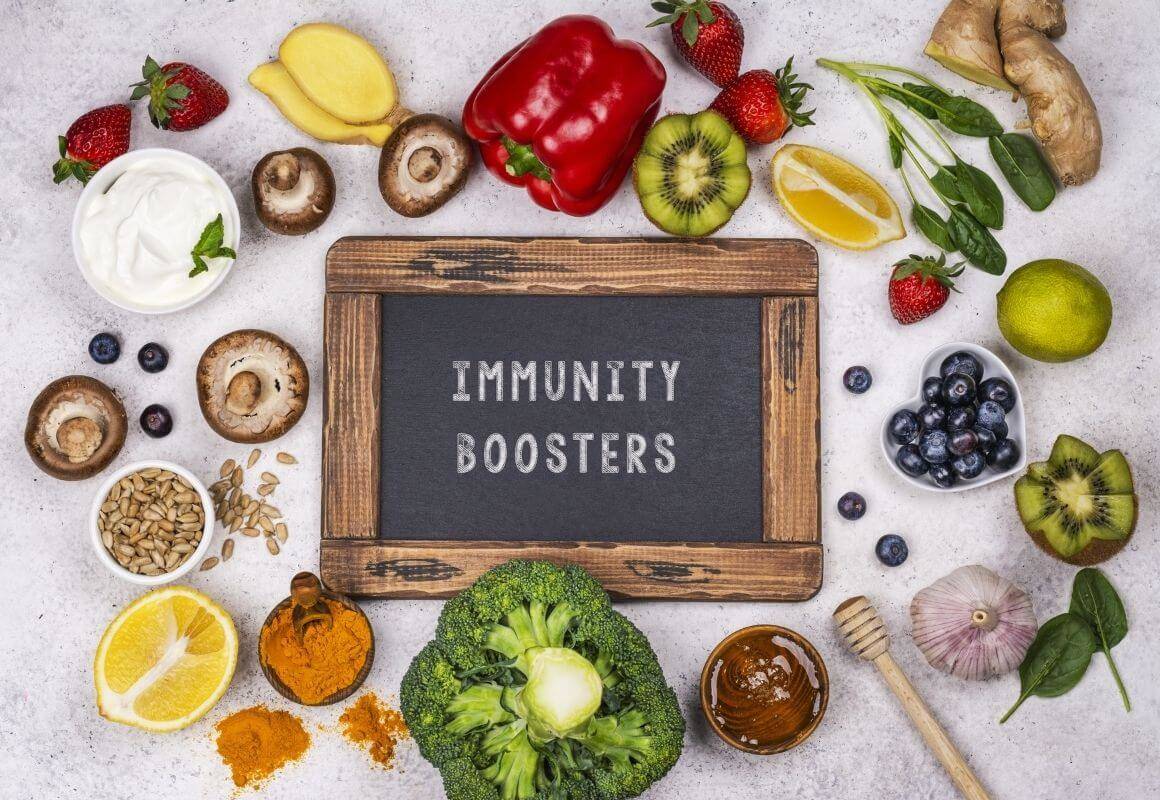
Whole, minimally processed foods.
Include these key vitamins, minerals and herbs:
Clinical studies have shown the following natural immune boosters are highly beneficial for maintaining healthy immunity.
Vitamin D
Vitamin D Most people know of vitamin D as a nutrient that supports bone health. While this is true, it is also essential for immune health. In fact, before the invention of effective antibiotics, vitamin D was used to support immune response. Scientists know a lot about the role of vitamin D in the immune response.
Vitamin D contributes to immune functioning: in populations with vitamin D deficiency, there are higher risks of some types of infection. It modulates adaptive immune response cells. In people with autoimmune diseases, vitamin D has a vital role in supporting the healthy activity of B cells and T cells, which are the main response cells of the adaptive immune system.
Andrographis Extract
Animal studies show that Andrographis, also known as Indian echinacea, can effectively treat and prevent lung inflammation, as demonstrated in a study of mice with chemically induced bronchitis. Double-blind clinical trials have also shown that people taking 48 to 60 mg of Andrographis extract tend to have milder symptoms and recover faster from the common cold.
Elderberry Extract
Elderberries have been considered one of the most healing medicinal plants in the world. Historically, Native American and European civilizations used these tart fruits to heal wounds, treat infections, and lower fevers. Nowadays, elderberries are a popular supplement to fight off common viruses like the common cold and the flu.
100 grams of elderberries provide about 60 percent of the recommended daily intake of vitamin C. Black elderberry extract also contains important compounds like flavonoids, which are potent antioxidants with immune-boosting and anti-inflammatory properties. Evidence shows that supplementing with black elderberry extract can significantly reduce upper respiratory symptoms, like those produced by the cold and flu viruses.

Elderberries for immune support
Eleutherococcus Extract – Siberian Ginseng
In traditional Eastern medicine, Siberian ginseng was used as an “adaptogen.” An adaptogen is a substance that might help the body cope better with stress. Nowadays, it is used as a natural immune booster. The active compounds in Siberian ginseng, called eleutherosides, may stimulate the immune system and reduce the duration and severity of some respiratory infections like pneumonia. Research also shows that Siberian ginseng may inhibit the replication of certain viruses, including the human rhinovirus and the influenza virus (flu).
Vitamin A
Vitamin A is an umbrella term for a group of fat-soluble compounds essential for eye health, growth, cellular differentiation, and immunity. Growing evidence confirms the effectiveness of this vitamin for immune system support. Specifically, vitamin A increases the activity of white blood cells such as lymphocytes. It also helps maintain the integrity of the thin sheet of cells that line and protect the internal and external surfaces of the body, called the epithelial tissues.
Biotin
Biotin is a B-complex water-soluble vitamin essential for fat, carbohydrate, and amino-acid metabolism. It is sometimes called vitamin B7 or vitamin H. Although vitamin B7 supplements are generally recommended for hair and nail health, studies show that biotin deficiency may negatively impact the immune system’s functions.
Inadequate biotin levels have been associated with an increased release of cytokines – a number of inflammatory chemicals that fight infections. Cytokines are essential for triggering inflammatory responses that help keep harmful substances out of the body. But when the immune system is producing them erratically, they can lead to severe health outcomes, including organ damage triggered by chronic inflammation.
Vitamin C
Vitamin C is involved in many cellular processes that benefit immunity. As a powerful antioxidant, vitamin C is capable of decreasing inflammation and neutralizing free-radical damage. It also promotes phagocytes’ activity, and research shows it may reduce lung inflammation caused by certain respiratory viruses.
A systematic review of more than 30 studies about the effects of vitamin C found that ingesting 1 to 2 grams (1,000 to 2,000 mg) of this vitamin every day reduced common cold duration by 8 percent in adults and 18 percent in children.
Chromium
Chromium has been linked to an enhanced fat and carbohydrate metabolism and insulin control. Some studies have shown that chromium supplements can help people with type 2 diabetes and prediabetes regulate blood sugar levels more effectively. Chromium may support the immune system by maintaining a healthy metabolism, which is critical for overall health.
Zinc
Zinc is a mineral essential for DNA synthesis and regulating immune function. People who have zinc deficiencies tend to have weaker immune systems and may be more prone to infections. Studies have shown that zinc supplements may reduce the number of respiratory infections in children and may reduce the duration of the common cold in adults when started early on the disease.
The 5 simple lifestyle changes detailed above can go a long way towards building and maintaining a strong immune system and protecting yourself from viruses and infections.
Learn more about the importance of these 9 vitamins, minerals and herbs in this scientific white paper.
* These statements have not been evaluated by the Food and Drug Administration. This product is not intended to diagnose, treat, cure, or prevent any disease.

